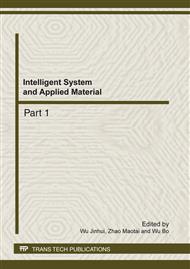[1]
Savchenko: Supercavitation-problems and perspective. Forth International Symposium on Cavitation. Passbena: California Institute of Technology, (2001).
Google Scholar
[2]
Savchenko. Investigation of High-Speed Supercavitating Underwater Motion of Bodies. Proc AGARD FDP Workshop on High Speed Motion in Water, Kiev, Ukraine , pp.194-205, (1997).
Google Scholar
[3]
Deng Fei. On Hydrodynamic Design of Underwater Supercavitating HighSpeed Vehicle. Journal of Northwestern Polytechnical University, 22(6), pp.806-809, (2004).
Google Scholar
[4]
Fine NE, Kinnas SA. A boundary element method for the analysis of the flow around 3-D cavitating hydrofoils. J Ship Res, 37(3), pp.213-224, (1993).
DOI: 10.5957/jsr.1993.37.3.213
Google Scholar
[5]
Fu Huiping, Li Fuxin. A numerical analysis of the flow around a partially-cavitating axisymmetric body. Acta Mechanica Sinica, 34(2), pp.278-284, (2002).
Google Scholar
[6]
Cheng Xiaojun, Lu Chuanjing. On the partially cavitating flow around two-dimensional hydrofoils. Applied Mathematics and Mechanics, 21(12), pp.1310-1317, (2000).
Google Scholar
[7]
Jiang jun, Liuwen hua, Liu zhong: Trajectory control and optimization of supercavitating torpedo, The International Symposium on Systems and Control in Aerospace and Astronautics, pp.1-5, (2008).
DOI: 10.1109/isscaa.2008.4776142
Google Scholar
[8]
S. Ashley: Warp-drive Underwater, Scientific American, vol. A30, p.57–64, (2001).
Google Scholar
[9]
A.D. Vasin: Some Problems of Supersonic Cavitation Flows, Proceeding of the 4th International Symposium on Cavitation, Pasadena CA, vol. 1, pp.20-23, (2001).
Google Scholar
[10]
Y. W. Gu, W. G. An, H. An: Analyzing of buckling resistance ofan underwater elastic body experiencing high speed motion, Journal of Harbin Engineering University, vol. 29(7), pp.683-686, (2008).
Google Scholar
[11]
W. G. An, Y. W. Gu, H. An: Analysis of antibending stability andreliability of an elastic body with initial eccentricity at high speedmotion underwater, Acta ArmamentarII, vol. 29(7), pp.824-828, (2008).
Google Scholar
[12]
W. G. An, L. Zhou, H. An: Structure buckling andnon-probabilistic reliability analysis of supercavitating vehicles, Journal of Harbin Institute of Technology (New Series), vol. 16(4), pp.561-569, (2009).
Google Scholar
[13]
Z. P. Qiu: Convex Method Based on Non-probabilistic Set-theoryand its application. Beijing: National defense industry Press, p.152–172, (2005).
Google Scholar


